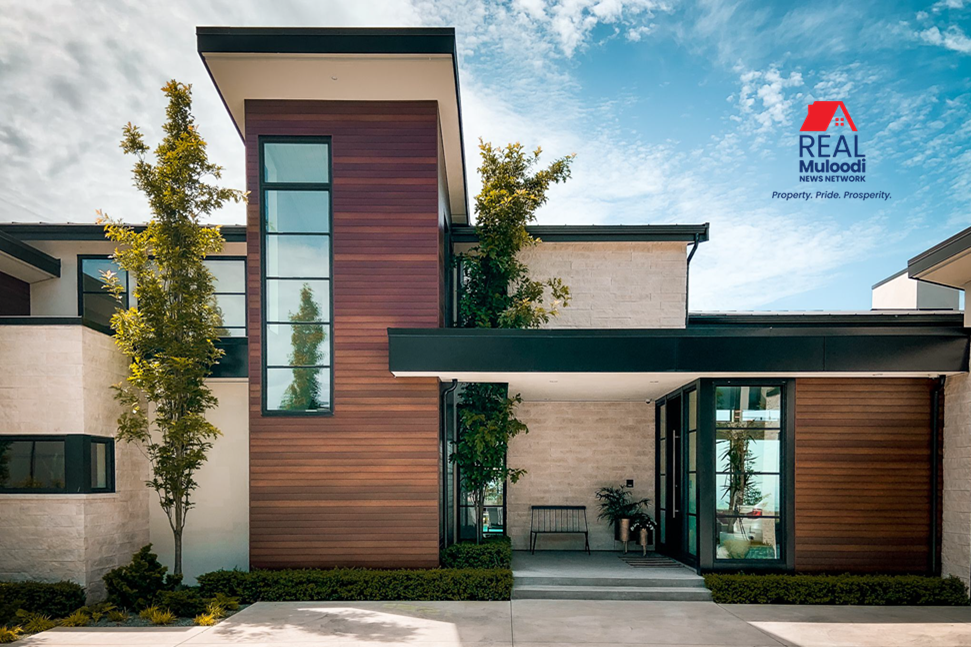UGANDA, Kampala | Real Muloodi News | As urbanisation accelerates in Uganda, cities expand, and populations grow, leading to an increased demand for modern housing.
Many Ugandans are migrating to urban centres for economic opportunities, intensifying the need for contemporary housing options.
However, existing housing often fails to meet modern standards, leaving many urban dwellers with inadequate infrastructure and substandard living conditions.
Increasing Demand for Modern Housing
Uganda’s burgeoning middle class and rising disposable incomes create a fertile ground for contemporary housing development.
Developers are responding to the growing appetite for modern amenities and lifestyle conveniences by introducing innovative housing concepts that align with the progressive preferences of urban residents.
Attributes of Contemporary Design
Contemporary design is characterised by tranquillity, clean lines, and minimalist decor. Moses Lutalo, Managing Director of Broll Uganda Limited, explains that contemporary housing reflects the needs of today’s society, incorporating elements such as sustainability, technology, and customisation.
Lutalo emphasises that open floor plans and ample natural light are defining features of contemporary design.
“Large windows and strategically placed skylights fill interiors with sunlight, creating warmth and a connection to the outdoors,” Lutalo says.
This design approach blurs the boundaries between inside and outside, making nature an integral part of the living environment.
Homes with access to stunning views, such as water bodies, mountain ranges, or city skylines, often adopt this design.
“In Uganda’s affluent suburbs, new structures focus on modern living and feature luxury amenities; this is contemporary design,” Lutalo observes.
Diverse Housing Options
Contemporary housing offers a wide range of options to accommodate various needs and preferences, from compact urban apartments to luxury suburban homes.
Demographic shifts, including changing household sizes, generational preferences, and cultural diversity, drive demand for housing that reflects diverse lifestyles and values.
Materials in Contemporary Housing
Contemporary design often incorporates modern and sometimes high-end materials such as glass, steel, concrete, and natural stone.
While these materials can create stunning visual effects, they may be more expensive than traditional materials like wood or brick.
Contemporary architecture allows for a high degree of customisation and personalisation to suit individual preferences and lifestyle needs, featuring unique shapes, angles, and structural elements that require specialised design expertise and construction techniques. This complexity can increase costs due to the intricate details and unconventional building methods.
Investment in Modern Housing
Despite the higher costs, the investment in contemporary homes pays off due to high demand.
“These homes attract top-tier tenants willing to pay from $5,000 (about Shs19m) a month and above,” Lutalo notes. Contemporary homes also often command higher resale values compared to traditional properties.
Décor for a Contemporary Home
Diana Nakubulwa, an interior designer based in Bweyogerere, emphasises selecting furnishings, accessories, and finishes that complement the clean lines and minimalist aesthetic of contemporary spaces.
She suggests furniture with clean lines, geometric shapes, and minimal embellishments, made from materials such as metal, glass, or leather. Modular furniture is recommended for its versatility and space-saving features.
Nakubulwa advises using a neutral colour palette, such as shades of white, grey, black, and taupe, as the foundation for décor.
“These colours create a sense of calm and sophistication characteristic of contemporary design,” she says.
Pops of colour can be added through accent pillows, artwork, or accessories for visual interest.
For lighting, Nakubulwa recommends fixtures with clean lines and modern finishes to complement the overall aesthetic. This includes a mix of ambient, task, and accent lighting to highlight architectural features and create visual interest.
“It is important to maintain balance and proportion in your décor by carefully arranging furniture and accessories to create a harmonious composition,” Nakubulwa says.
Challenges in Modern Housing Development
The journey towards modern housing in Uganda faces several challenges. Developers grapple with issues of affordability, sustainability, and infrastructure as they strive to bring their vision to life.
Access to financing, land tenure issues, and regulatory hurdles pose formidable obstacles.
Despite these challenges, more property developers and homeowners have embraced modern housing, evidenced by the changing city skyline.
“Young professionals are captivated by the allure of contemporary living and seek out sleek apartments with state-of-the-art amenities. Families envision spacious homes with open floor plans and green spaces. Entrepreneurs dream of innovative housing solutions that blend tradition with modernity,” Lutalo notes.
Future of Modern Housing
As urbanisation continues, the demand for modern housing in Uganda is expected to grow. Developers will likely innovate and overcome challenges to meet the rising demand.
Modern housing and home maintenance remain crucial aspects, ensuring that contemporary homes are well-maintained and provide a high quality of life for residents.
READ MORE LIKE THIS:



